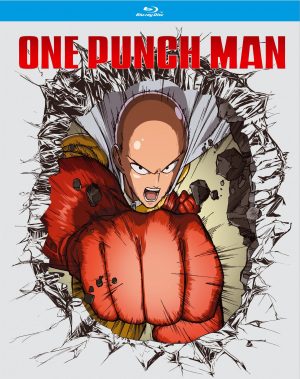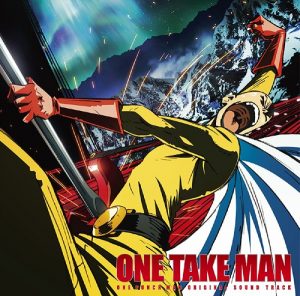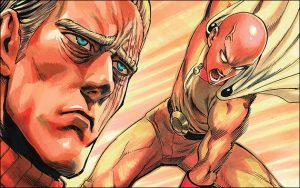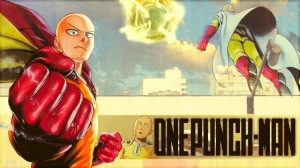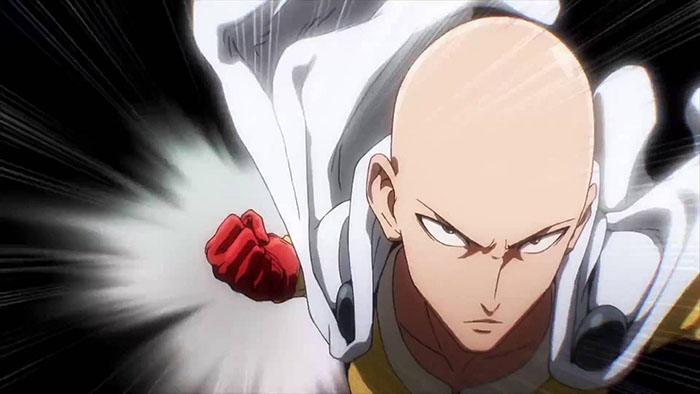
While the original manga to One Punch Man debuted as a webcomic back in 2009, with the rise of the superhero genre largely thanks to the Marvel Cinematic Universe, the presence of this series in context to both anime, manga and superheroes as a whole has a rather ironic relevance. As we all know, One Punch Man takes place in a world of heroes vs. villains, and if there is one man that can stand up to these threats, it’s Saitama, who has the “power” to take out all opposition with a single punch like a prime Mike Tyson on senzu beans if they were farmed in the former Soviet Union. Besides its generic plot beyond a superficial description, what is it about this series that defines itself and manages to find a universal fan base?
Parody of Super Heroes
For familiar audiences, they can instantly conclude that it’s a parody/spoof of the superhero genre, as well as overpowered characters largely featured in anime and manga. If you’re familiar with our list of most overpowered characters in anime, then Saitama made the list and for good reasons. It’s reasonable for people to think that overpowered can equal something negative, but One Punch Man finds excellent ways to creatively express how to use an overpowered character like Saitama, and still make him relatable to audiences of all backgrounds.
Beyond Saitama, you get a whole bunch of heroes you’ve seen before in both Japanese and American pop culture. Some characters are cyborgs like Genos which we’ve seen in many works in both anime and American comics and cinema, Metal Bat is a spoof of Japanese delinquents from the late Showa Era, and there are those that take inspiration from Western and Japanese fairy tales, and many of them have their own agendas driven by their ego as to why they go out and do their heroic duties, as it contradicts Saitama’s relaxed and indifferent nature.
Critiquing Modern Society
Not only does it spoof anime, if you’re familiar with Japanese society, the series through Saitama does find ways to critique it as well. As portrayed in domestic and international media, the Japanese are workaholics (or slaves to the system). Prior to becoming a superhero, Saitama was just like any other guy, a slave to the system. Nobody can blame anybody for wanting a stable life, but is getting up, going to work (especially working non-obligatory (and quite possibly unpaid) overtime), getting drunk with your boss, and coming home after midnight any way to live? Certainly not! Saitama got fed up with it and chose to live life on his own terms regardless of the consequences.
Even when he decides to pursue life as a hero, he still thinks making it in time for a supermarket sale is a bigger deal than taking out a vicious monster. Through his attitude, you get a parody of how overpowered he is. His opponents pose little to no challenge in the same way that the Warriors have been almost unstoppable since they got Kevin Durant. Through Genos, Saitama’s self-proclaimed disciple, he serves as a surrogate for the audience to get a better glimpse of Saitama and despite his great power, he’s just a simple guy who doesn’t care what anybody thinks about him (as long as it’s not about his baldness).
As an extension to Saitama’s attitude towards trendy expectations, his indifference to his membership and position in the Hero Association can be seen as a proverbial middle finger to how competitive, counterintuitive, and emotionally unhealthy Japanese education and the workforce can be. Despite Japan being a group oriented society, it does have its competitive qualities with its education system of who can get the best score, or who can get the highest sales in a company (or who can work the most unpaid overtime hours to impress the boss). Through the Hero Association, members are separated into their own classes, and are assigned rankings within those classes. The more deeds you do, the higher you can advance, and that seems to be a reasonable system.
Despite Saitama’s tremendous strength, his other underwhelming qualities and unassuming nature has him designated as a C-Class hero upon induction. Though Saitama does exhibit some disagreement, in the long run, he doesn’t care about his rankings because that’s not what should motivate a hero, and such a system shouldn’t define a person. His only validation is that he did something good for the sake that it’s right, and not for fame and glory. Sometimes, the best way to show heroism is to do things and not brag about it, and Saitama in an excellent representation of that.
Final Thoughts (Homage)
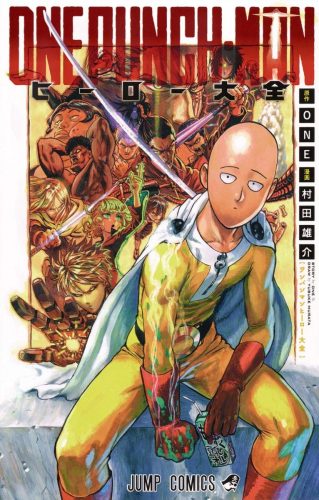
Yes, One Punch Man is a parody and a critique of anime, super heroes, and modern Japanese society, but that doesn’t mean it has its own value beyond that. Just like how Steel Panther spoofs 1980s hair metal bands, they excellently pay homage to them as well (hear Michael Starr sing Unchained by Van Halen). One Punch Man also pays homage to the hero genre by demonstrating what a true hero does, and at the same time, just because someone has super powers, it doesn’t mean that they’re any different from regular people. Saitama can save the world, but it doesn’t mean he’s free from other everyday obligations such as paying his rent.
Sometimes, people just do things out of boredom or have some sort of crisis in whatever stage of life that they may be in. For some people, they handle that crisis by going back to school, starting a business, changing a job, or moving across the country (or world). For others, they can take up a new hobby and that hobby could be adopting a new exercise routine and finding a new power within you, and with that power, yes, it comes with great responsibility, but to also live life on your own terms.
Recommended Post
6 Anime Like One Punch Man [Updated Recommendations]
Recommended Post
[Honey's Crush Wednesday] 5 Saitama Highlights (One Punch Man)
Recommended Post
Top 10 Strongest One Punch Man Manga Characters
Recommended Post
Top 10 Strongest One Punch Man Anime Characters [Updated]
Recommended Post


